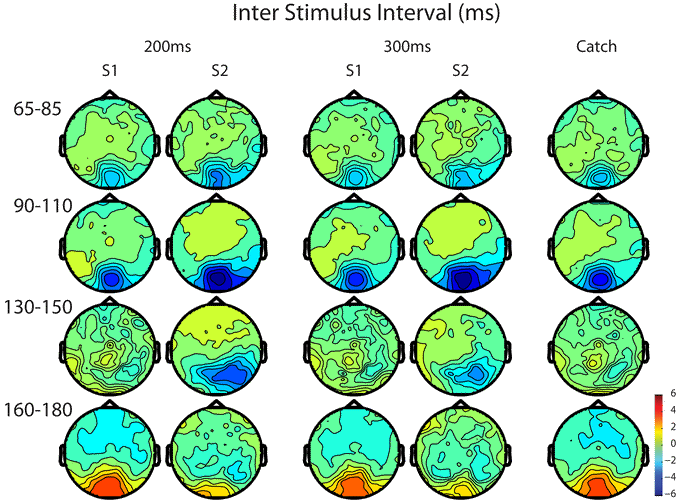Spatio-temporal dynamics of adaptation in the human visual system; a high-density electrical mapping study
Abstract
When sensory inputs are presented serially, response amplitudes to stimulus repetitions generally decrease as a function of presentation rate, diminishing rapidly as inter-stimulus intervals (ISIs) fall below 1 s. This ‘adaptation’ is believed to represent mechanisms by which sensory systems reduce responsivity to consistent environmental inputs, freeing resources to respond to potentially more relevant inputs. While auditory adaptation functions have been relatively well characterized, considerably less is known about visual adaptation in humans. Here, high-density visual-evoked potentials (VEPs) were recorded while two paradigms were used to interrogate visual adaptation. The first presented stimulus pairs with varying ISIs, comparing VEP amplitude to the second stimulus with that of the first (paired-presentation). The second involved blocks of stimulation (N = 100) at various ISIs and comparison of VEP amplitude between blocks of differing ISIs (block-presentation). Robust VEP modulations were evident as a function of presentation rate in the block-paradigm, with strongest modulations in the 130–150 ms and 160–180 ms visual processing phases. In paired-presentations, with ISIs of just 200–300 ms, an enhancement of VEP was evident when comparing S2 with S1, with no significant effect of presentation rate. Importantly, in block-presentations, adaptation effects were statistically robust at the individual participant level. These data suggest that a more taxing block-presentation paradigm is better suited to engage visual adaptation mechanisms than a paired-presentation design. The increased sensitivity of the visual processing metric obtained in the block-paradigm has implications for the examination of visual processing deficits in clinical populations.
